Medical Services and Techniques \ 1-1

This book has been prepared with the aim of helping students better understand the Anatomy and Physiology or Human Biology course and to provide a resource for students. While creating the book, care was taken to ensure that the information was short and sufficient. Information about common diseases related to each system is also given. Information in the book; supported by numerous figures, photographs and tables.
This work; It has been prepared at a level that can be useful to students of the Biology Department of the Faculty of Science, Arts and Sciences, as well as to students of other faculties or colleges who take the Anatomy and Physiology course.
This work; It has been prepared at a level that can be useful to students of the Biology Department of the Faculty of Science, Arts and Sciences, as well as to students of other faculties or colleges who take the Anatomy and Physiology course.

A good anesthesia technician/technician should act with correct and high-quality knowledge underlying the practices. In this context, the margin for error of each planned intervention will be negligible. In this book, a wide range of knowledge and practice is expertly presented by anesthesiologists who are experts in their fields, from job description of an anesthesia technician/technician to their responsibilities, from pre-operative considerations to preparation of drugs, from equipment recognition to basic applications.
The content of the book is completely planned in accordance with the curriculum of the anesthesia technician/technician education. In the book, it is aimed to create a more conscious and equipped anesthesia technician/technician identity rather than giving simple information.
Another feature of this book is that important issues and points to be considered in the chapter are carefully presented in boxes.
This book, which will meet the practical expectations in addition to the theoretical information, is the main reference book to be used in the field of anesthesia both during the education period and in the professional life after the education.
The content of the book is completely planned in accordance with the curriculum of the anesthesia technician/technician education. In the book, it is aimed to create a more conscious and equipped anesthesia technician/technician identity rather than giving simple information.
Another feature of this book is that important issues and points to be considered in the chapter are carefully presented in boxes.
This book, which will meet the practical expectations in addition to the theoretical information, is the main reference book to be used in the field of anesthesia both during the education period and in the professional life after the education.

A good anesthesia technician/technician should act with correct and high-quality knowledge underlying the practices. In this context, the margin for error of each planned intervention will be negligible. In this book, a wide range of knowledge and practice is expertly presented by anesthesiologists who are experts in their fields, from job description of an anesthesia technician/technician to their responsibilities, from pre-operative considerations to preparation of drugs, from equipment recognition to basic applications.
The content of the book is completely planned in accordance with the curriculum of the anesthesia technician/technician education. In the book, it is aimed to create a more conscious and equipped anesthesia technician/technician identity rather than giving simple information.
Another feature of this book is that important issues and points to be considered in the chapter are carefully presented in boxes.
This book, which will meet the practical expectations in addition to the theoretical information, is the main reference book to be used in the field of anesthesia both during the education period and in the professional life after the education.
The content of the book is completely planned in accordance with the curriculum of the anesthesia technician/technician education. In the book, it is aimed to create a more conscious and equipped anesthesia technician/technician identity rather than giving simple information.
Another feature of this book is that important issues and points to be considered in the chapter are carefully presented in boxes.
This book, which will meet the practical expectations in addition to the theoretical information, is the main reference book to be used in the field of anesthesia both during the education period and in the professional life after the education.

A good anesthesia technician/technician should act with correct and high-quality knowledge underlying the practices. In this context, the margin for error of each planned intervention will be negligible. In this book, a wide range of knowledge and practice is expertly presented by anesthesiologists who are experts in their fields, from job description of an anesthesia technician/technician to their responsibilities, from pre-operative considerations to preparation of drugs, from equipment recognition to basic applications.
The content of the book is completely planned in accordance with the curriculum of the anesthesia technician/technician education. In the book, it is aimed to create a more conscious and equipped anesthesia technician/technician identity rather than giving simple information.
Another feature of this book is that important issues and points to be considered in the chapter are carefully presented in boxes.
This book, which will meet the practical expectations in addition to the theoretical information, is the main reference book to be used in the field of anesthesia both during the education period and in the professional life after the education.
The content of the book is completely planned in accordance with the curriculum of the anesthesia technician/technician education. In the book, it is aimed to create a more conscious and equipped anesthesia technician/technician identity rather than giving simple information.
Another feature of this book is that important issues and points to be considered in the chapter are carefully presented in boxes.
This book, which will meet the practical expectations in addition to the theoretical information, is the main reference book to be used in the field of anesthesia both during the education period and in the professional life after the education.

In this work, which was prepared as a textbook, up-to-date information on the field of "Biochemistry" is included, as well as classical information. The chapters of our multi-authored book have been discussed in detail by the authors.
The book is a reference resource that can be used by those who are involved in educational activities related to "Biochemistry". Since "biochemistry" is the basis of many fields of science, it has a feature that people in other fields of science can easily benefit from.
The book is a reference resource that can be used by those who are involved in educational activities related to "Biochemistry". Since "biochemistry" is the basis of many fields of science, it has a feature that people in other fields of science can easily benefit from.

Environmental pollution occurs as a result of uncontrolled discharge of waste materials, which are released as a result of human activities and which are not evaluated, to the receiving environment such as air, water and soil, and causes significant changes in the ecological balance of nature. The resulting global environmental problems such as climate change, desertification, loss of biodiversity, deforestation, destruction of the ozone layer endanger the sustainability of the environment, and pose significant threats to the health, survival, food and water resources of humans and other living species.
Maintaining a healthy life is only possible with a healthy environment. For a healthy environment, the natural balance, that is, the protection of the ecosystem, is only possible with the control of environmental pollution.
This book has been prepared in order to give the necessary processes and design principles for the treatment of wastes that cause air, water and soil pollution as a result of production and consumption activities, and solutions of problems and design examples are given for a better understanding of treatment/disposal process designs.
In the first part of the book, environmental problems are briefly introduced; In the second part, as air pollution control processes, the designs of cyclones, wet scrubbers, bag filters and electrostatic filters in the retention of solid particles, physical processes such as filled absorber, adsorption, membrane in the treatment of dangerous substances in flue gases and the processes involving reactions are examined, sulfur dioxide; Examples of the design of control processes for gases that cause important environmental problems such as nitrogen oxides and carbon dioxide are given.
In the third chapter, water pollution and control processes are discussed and the physical; chemical and biological treatment processes were investigated. In this section, exemplary designs have been made by adsorption, air stripping and water purification with ion exchangers; in chemical treatment processes, precipitation, electrochemical treatment, wet air oxidation, advanced oxidation processes are examined and sample problems are given.
The processes applied in the biological treatment of wastewater are given and the design of the activated sludge treatment system is made.
In the fourth chapter, which deals with soil pollution, physical bioremediation and chemical treatment processes are examined and sample problems are included.
In the last part of the book, solid wastes and their management are examined and re-evaluation of solid wastes; their regular storage; composting; biogas production; burning (incineration); Information about pyrolysis and gasification processes are presented and sample designs are given.
In conclusion, this book has been prepared as a useful resource for undergraduate and graduate students and engineers interested in environmental pollution control.
Maintaining a healthy life is only possible with a healthy environment. For a healthy environment, the natural balance, that is, the protection of the ecosystem, is only possible with the control of environmental pollution.
This book has been prepared in order to give the necessary processes and design principles for the treatment of wastes that cause air, water and soil pollution as a result of production and consumption activities, and solutions of problems and design examples are given for a better understanding of treatment/disposal process designs.
In the first part of the book, environmental problems are briefly introduced; In the second part, as air pollution control processes, the designs of cyclones, wet scrubbers, bag filters and electrostatic filters in the retention of solid particles, physical processes such as filled absorber, adsorption, membrane in the treatment of dangerous substances in flue gases and the processes involving reactions are examined, sulfur dioxide; Examples of the design of control processes for gases that cause important environmental problems such as nitrogen oxides and carbon dioxide are given.
In the third chapter, water pollution and control processes are discussed and the physical; chemical and biological treatment processes were investigated. In this section, exemplary designs have been made by adsorption, air stripping and water purification with ion exchangers; in chemical treatment processes, precipitation, electrochemical treatment, wet air oxidation, advanced oxidation processes are examined and sample problems are given.
The processes applied in the biological treatment of wastewater are given and the design of the activated sludge treatment system is made.
In the fourth chapter, which deals with soil pollution, physical bioremediation and chemical treatment processes are examined and sample problems are included.
In the last part of the book, solid wastes and their management are examined and re-evaluation of solid wastes; their regular storage; composting; biogas production; burning (incineration); Information about pyrolysis and gasification processes are presented and sample designs are given.
In conclusion, this book has been prepared as a useful resource for undergraduate and graduate students and engineers interested in environmental pollution control.
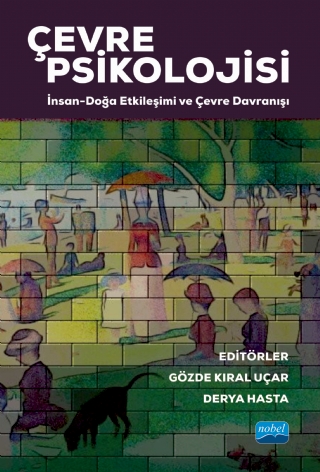
This book provides readers with a comprehensive resource on the relationship between man and the natural environment and the psychological factors underlying environmental behavior, accompanied by scientific findings and examples from daily life. Each chapter of the book is written in a consistent, fluent and plain language by authors specialized in different disciplines of psychology.
The book not only conveys the issues focusing on human and nature interaction and environmental behavior to the reader from a psychological point of view, but also reveals striking information on environmental behavior, which is directly related to the climate crisis and other ecological problems that affect the world, and offers some solutions. In addition to all these, it also creates awareness in the reader about the effects of nature and environmental regulations on the psychological and physical health of people. In this respect, the book is a resource that can be read with pleasure not only by experts working in the field, but also by anyone interested in psychology and environmental issues.
The book not only conveys the issues focusing on human and nature interaction and environmental behavior to the reader from a psychological point of view, but also reveals striking information on environmental behavior, which is directly related to the climate crisis and other ecological problems that affect the world, and offers some solutions. In addition to all these, it also creates awareness in the reader about the effects of nature and environmental regulations on the psychological and physical health of people. In this respect, the book is a resource that can be read with pleasure not only by experts working in the field, but also by anyone interested in psychology and environmental issues.

Although studies have been carried out for more than a century in the field of "Environmental Psychology", which examines the mutual relationship between man and his natural and built environment, it has been about 60 years that the field emerged as a discipline. While we sometimes exhibit environmentally friendly behaviors in our interaction with the environment, we sometimes exhibit behaviors that harm the environment. In an area where human behavior is so important, we can say that Environmental Psychology is one of the most important disciplines we will apply to understand the behavior of individuals regarding the environment.
In human-environment interaction, we can sometimes see the damage we do to the environment without being a subject matter expert. For example, the closure of people in their homes at the beginning of the Pandemic period, which has made its impact felt all over the world as in our country since 2019, almost caused the revival of nature. We saw flowers bloom on the streets, in the streets, in places with heavy human circulation before. However, with the removal of the restriction, the signs of our going out into nature began to be visible again. We have now added masks and gloves to the objects that we used to throw on the ground (!) before. Formerly “Please do not throw garbage!” next to the warnings “Please do not throw masks!” It looks like the warnings will be added as well. These and similar events, which most of us have witnessed or somehow learned from the press, give clues about the human-nature relationship and also reveal the importance of environmental behavior.
This work named Introduction to Environmental Psychology; It will be an important resource for researchers doing postgraduate research, students taking environmental courses at undergraduate and postgraduate level, and all curious readers and researchers who care about the "environment", which is vital for human beings. We also consider this work as a start and hope that it will be instrumental in other studies that will contribute to the field.
In human-environment interaction, we can sometimes see the damage we do to the environment without being a subject matter expert. For example, the closure of people in their homes at the beginning of the Pandemic period, which has made its impact felt all over the world as in our country since 2019, almost caused the revival of nature. We saw flowers bloom on the streets, in the streets, in places with heavy human circulation before. However, with the removal of the restriction, the signs of our going out into nature began to be visible again. We have now added masks and gloves to the objects that we used to throw on the ground (!) before. Formerly “Please do not throw garbage!” next to the warnings “Please do not throw masks!” It looks like the warnings will be added as well. These and similar events, which most of us have witnessed or somehow learned from the press, give clues about the human-nature relationship and also reveal the importance of environmental behavior.
This work named Introduction to Environmental Psychology; It will be an important resource for researchers doing postgraduate research, students taking environmental courses at undergraduate and postgraduate level, and all curious readers and researchers who care about the "environment", which is vital for human beings. We also consider this work as a start and hope that it will be instrumental in other studies that will contribute to the field.
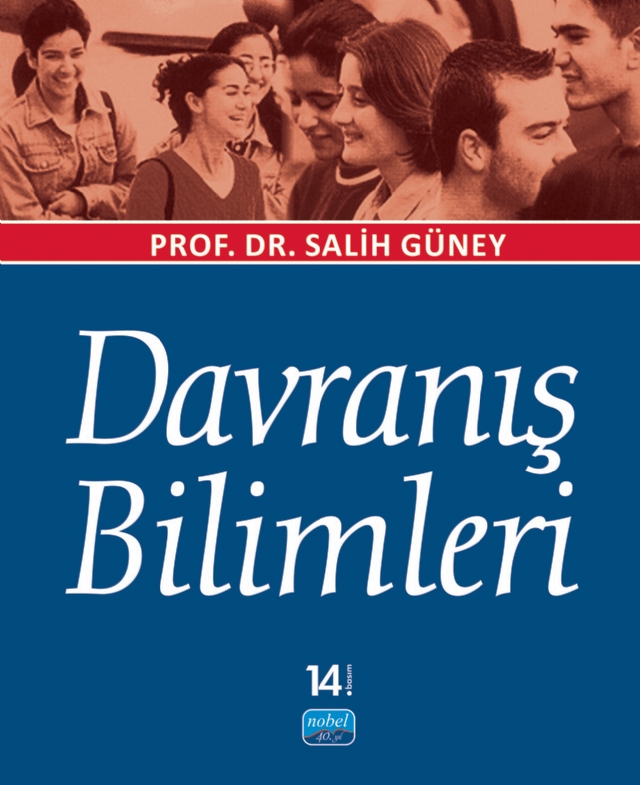
Behavioral Sciences is a book that will benefit anyone who wants to know themselves, understand the reasons for the attitudes and behaviors exhibited, and complete their personal development in the field of human relations. The book consists of 19 units. In units 1 and 2, the development and basic concepts of behavioral sciences, and in units 3, 4, 5 and 6, culture, cultural change, social influence and conformity behavior, social structure, social relations and social institutions are emphasized. Learning and perception in units 7 and 8, social groups in unit 9, emotional intelligence, personality and self in units 10 and 11 are explained in detail.
Attitude and prejudice in the 12th unit, individual communication, adaptation problems and defense mechanisms, behavioral disorders in the 13th, 14th and 15th units, methods of coping with stress in the 16th, 17th and 18th units, motivation and leadership, and time management in the 19th unit. has been elaborated upon in detail.
In the units enriched with up-to-date examples, a plain language that can be easily understood by anyone who reads it is used.
Attitude and prejudice in the 12th unit, individual communication, adaptation problems and defense mechanisms, behavioral disorders in the 13th, 14th and 15th units, methods of coping with stress in the 16th, 17th and 18th units, motivation and leadership, and time management in the 19th unit. has been elaborated upon in detail.
In the units enriched with up-to-date examples, a plain language that can be easily understood by anyone who reads it is used.
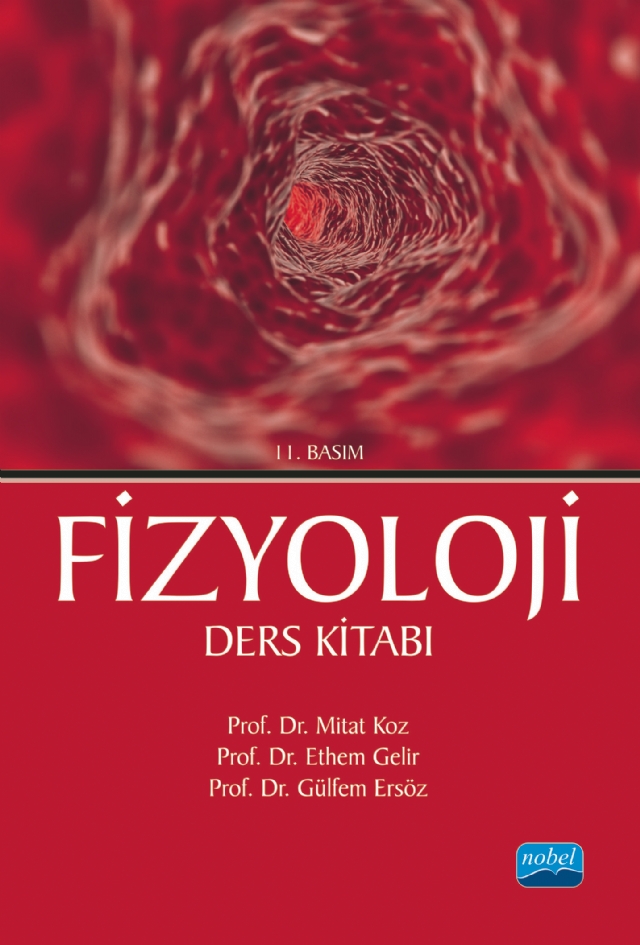
In this book; the organs and organ systems that make up the human body, how the organism functions in its integrity, and how the functional organization of our body takes place are explained in a simple level.
Firstly; in the structural and functional organization part of the human body, it is explained how the basic elements that exist in nature come together to form first chemical compounds, then cells, tissues, organs, systems and finally the whole of the organism and how they work in harmony by completing each other.
In the next parts of the book, cells, which are the functional unit of the organism, respectively; blood, which has basic functions such as transport, protection and regulation; nervous system with functions such as rapid control, coordination and learning-memory between systems; muscular system that elicits movements; the heart and circulatory system, which ensures that blood circulates throughout the body; the respiratory system that provides oxygen, which is the most basic requirement of life; digestive system, which allows energy sources and metabolic building blocks to enter the body; excretory system that allows the wastes formed in the body to be excreted through urine; the sensory system that ensures harmony with our environment through communication; endocrine system, which provides long-term and permanent coordination between systems; the reproductive system that maintains the species; nutrition, metabolism and thermoregulation events are explained separately in each section with the support of some anatomy knowledge.
Firstly; in the structural and functional organization part of the human body, it is explained how the basic elements that exist in nature come together to form first chemical compounds, then cells, tissues, organs, systems and finally the whole of the organism and how they work in harmony by completing each other.
In the next parts of the book, cells, which are the functional unit of the organism, respectively; blood, which has basic functions such as transport, protection and regulation; nervous system with functions such as rapid control, coordination and learning-memory between systems; muscular system that elicits movements; the heart and circulatory system, which ensures that blood circulates throughout the body; the respiratory system that provides oxygen, which is the most basic requirement of life; digestive system, which allows energy sources and metabolic building blocks to enter the body; excretory system that allows the wastes formed in the body to be excreted through urine; the sensory system that ensures harmony with our environment through communication; endocrine system, which provides long-term and permanent coordination between systems; the reproductive system that maintains the species; nutrition, metabolism and thermoregulation events are explained separately in each section with the support of some anatomy knowledge.

Multidisciplinary research on the biological basis of our behavior is of great interest in our country as well as all over the world. This book, which is an original work in the field of physiological psychology, has been prepared by experts in the field of psychology, neurosciences, physiology, anatomy, neurology, psychiatry, language and speech therapy departments of different universities. In the book, the path from physiological psychology to cognitive neuroscience is genetics, neural transmission, nervous system, brain development, psychopharmacology, visual and non-visual sensory systems, motor system, language, memory, learning, emotions, social cognition, eating-drinking-reproductive behaviors and sleep. topics are covered. In these chapters, firstly, the historical development of the subject is discussed, then the biological mechanisms underlying the behaviors are explained and the subjects are enriched through current studies. In the Physiological Psychology book, which includes the topics at the intersection of physiology, anatomy and psychology, care was taken to include not only Western-based studies but also original studies made in our country. Attention was paid to ensure that the language of the book was fluent, plain and understandable; topics were supported with diagrams, pictures and graphics priority has been given to preparing the chapters in a way that the reader can read with pleasure and easily understand. This book we hope that it will be a resource that will help experts and students working in the fields of psychology, psychological counseling and guidance, psychiatry and neuroscience to discover the biological basis of behavior.

Physiotherapy and rehabilitation is a very comprehensive discipline. Physiotherapists serve in different patient groups as well as healthy children and adults. Rehabilitation is a personalized treatment plan built on a comprehensive assessment and evaluation. Choosing the right assessment and treatment methods and creating a program specific to the individual requires mastery of basic sciences such as anatomy, physiology, kinesiology, pathology and the blending of this information with rehabilitation practices. In this book, applications in different physiotherapy and rehabilitation disciplines are presented to health professionals in a comprehensive language. With the hope that it will be useful to science and its readers...
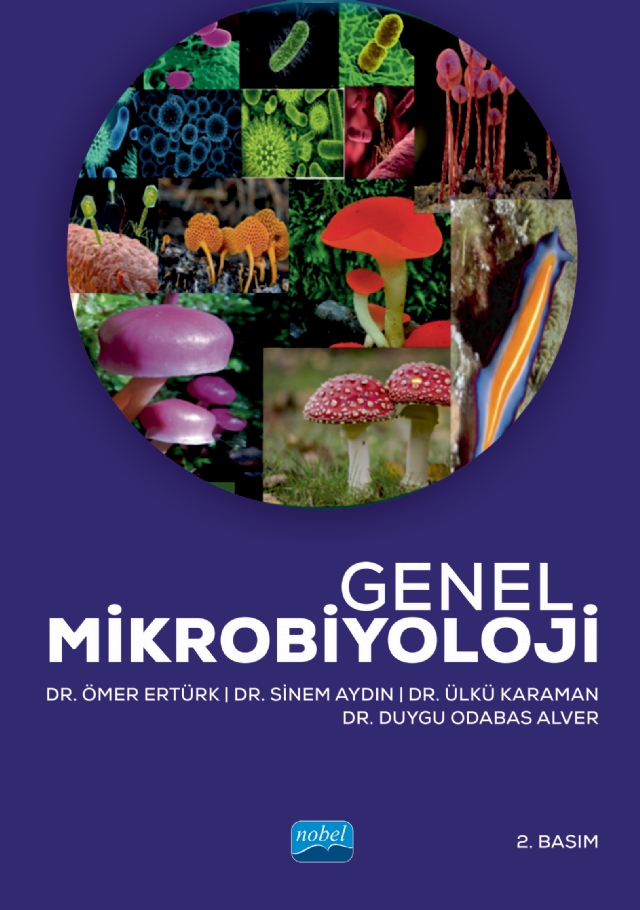
Microbiology has become an important and interesting field for beginners. While learning the content and concepts of basic microbiology, many questions are asked: How do I learn the names of all these microorganisms? What infection does bacteria, virus or fungus cause and which diseases do they cause? How are these diseases treated? In this book, comprehensive information is presented about the information that a student or an academician interested in the field of microbiology is curious about in the field of microbiology. The basic concepts of General and Molecular Microbiology have been tried to be presented in a clear and concise manner that will appeal to students studying in different health fields and academicians interested in microbiology. The topics are written in a plain language, with uncomplicated explanations for difficult concepts. The topics were summarized through tables and figures rather than a long text, and colorful visuals were included for students. In particular, the important points in the reviews were highlighted in the boxes to help the students, and the study questions were prepared to address the relevant aspects of each subject, including clinical cases, and each section was prepared with current developments and information on microbiology. The book starts with a general introduction to microbiology and continues with chapters where general microbiology issues are discussed in detail. All microorganisms are given individually under sections. The sections on bacteria, viruses, fungi and parasites are neatly arranged. Each chapter is presented in color to excite those interested in microbiology and engage them while teaching new information. The book will also be useful in the laboratory applications of the subjects that form the basis of microbiology in the faculties of science, education faculties, medical faculties and dentistry faculties.
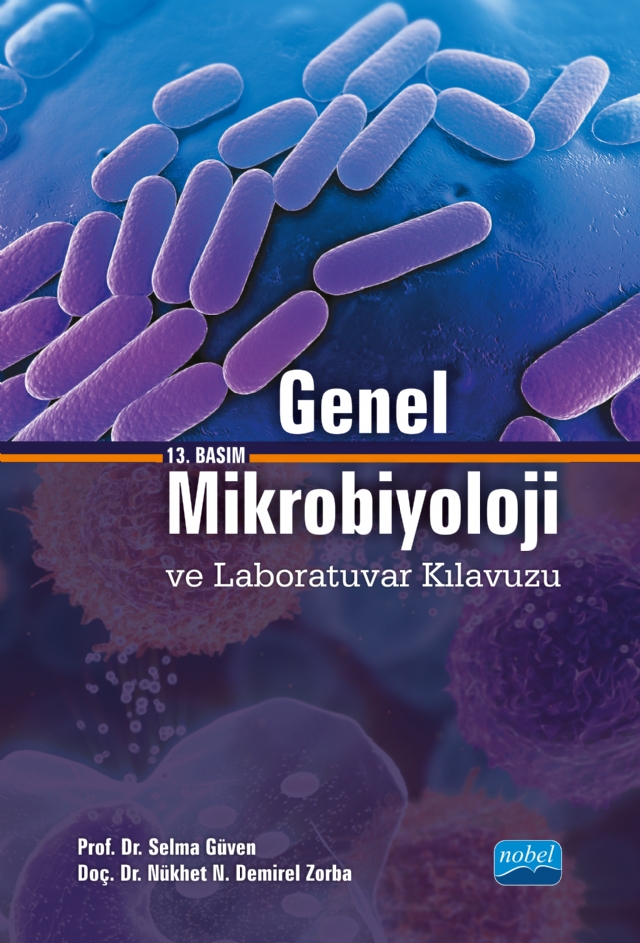
The first edition of our book, of which we have made the 12th edition, was made in 2003 under the title of "General Microbiology". It includes topics such as the morphology, cell structures, development, reproduction, ecology, hereditary changes, classification of microorganisms and consists of 10 chapters. In the 2 (2007), 3 (2011), 4 (2013), 5 (February 2015), 6 (November 2015) editions of the book, tools and equipment used in the microbiology laboratory, aseptic technique, sterilization, microscope types, staining methods, pure culture techniques Laboratory applications such as , media, counting methods are also included. Thus, the book consisting of 24 chapters was named as “General Microbiology and Laboratory Guide”.
In each renewed edition, new sources on the subject were scanned and important information was added. In the 4th edition made in 2013, no significant changes were made in the subject headings except for the additional titles of the structure and functions of nucleic acids (3.2.8.1.) and general and current summary information about antibiotics (5.5.). However, in the 5th edition, the subsection on the structure-functions of nucleic acids (3.2.8.1.) was taken to the 9th section and the name of this section was changed to "genetics of microorganisms and hereditary change". In the 9th edition, additions were made to the 10th chapter. In the 10th and 11th editions, some grammatical errors were corrected and in the last edition the importance of microbiology was added.
Our aim is to present a book on General Microbiology to the students of the Food Engineering Department of the faculties of Engineering and Agriculture and to the students of other departments studying General Microbiology at Universities. Of course, we will be proud that everyone who is interested in the subject will benefit from our book.
We are happy to be able to make the tenth edition of our book, which is popularly read in the relevant departments of both our universities and vocational schools.
In each renewed edition, new sources on the subject were scanned and important information was added. In the 4th edition made in 2013, no significant changes were made in the subject headings except for the additional titles of the structure and functions of nucleic acids (3.2.8.1.) and general and current summary information about antibiotics (5.5.). However, in the 5th edition, the subsection on the structure-functions of nucleic acids (3.2.8.1.) was taken to the 9th section and the name of this section was changed to "genetics of microorganisms and hereditary change". In the 9th edition, additions were made to the 10th chapter. In the 10th and 11th editions, some grammatical errors were corrected and in the last edition the importance of microbiology was added.
Our aim is to present a book on General Microbiology to the students of the Food Engineering Department of the faculties of Engineering and Agriculture and to the students of other departments studying General Microbiology at Universities. Of course, we will be proud that everyone who is interested in the subject will benefit from our book.
We are happy to be able to make the tenth edition of our book, which is popularly read in the relevant departments of both our universities and vocational schools.

Extraordinary Circumstances (ODD) cause loss of life and property by creating extraordinary results in daily life if preparation is not made. For this reason, it is vital to be prepared for ODDs both before and after. It is imperative to produce solutions with a multidisciplinary approach to developing and dynamic ODDs. For this reason, a systematic approach is important before, during and after ODDs from a Public Health Specialist perspective. The leading ODDs that remain up to date in Türkiye are refugees and migrants who are victims of floods, earthquakes and wars in our country due to our geographical location. In addition to these, many natural and human-induced ODDs such as landslides, transportation accidents and fires are experienced. There is also an absolute need for adequate knowledge for successful intervention in ODDs. Our insufficient level of theoretical knowledge makes things difficult in the already complex disaster area, and even drags the whole operation into chaos.

"This book; It consists of studies that uniquely address issues that have emerged as a result of several centuries of theoretical and empirical discoveries, contradictions and even tides in the history of psychology. The articles in the book show how wide the conceptualization level of psychology is, from the gene/environment interaction that largely determines our lives to the perception in the social environment. In addition, the book covers techniques ranging from animal models to MRI and EEG, and explains how and why psychology research has benefited from these methods. Apart from this scope and original content, another aspect that makes this book valuable is that it is in Turkish. Unfortunately, the dominance of English and its universality as the language of science brings with it the publication and dissemination of most of the researches in this language. Although the existence and prevalence of a lingua franca is important because it enables all scientists in the world to agree with each other, it is obvious that Turkish must be a scientific language and a means of communication. For this reason, I hope that this book will be an encouraging factor for young scientists to bring their ideas and products into our language.”
Reşit Canbeyli
Bogazici University
Reşit Canbeyli
Bogazici University
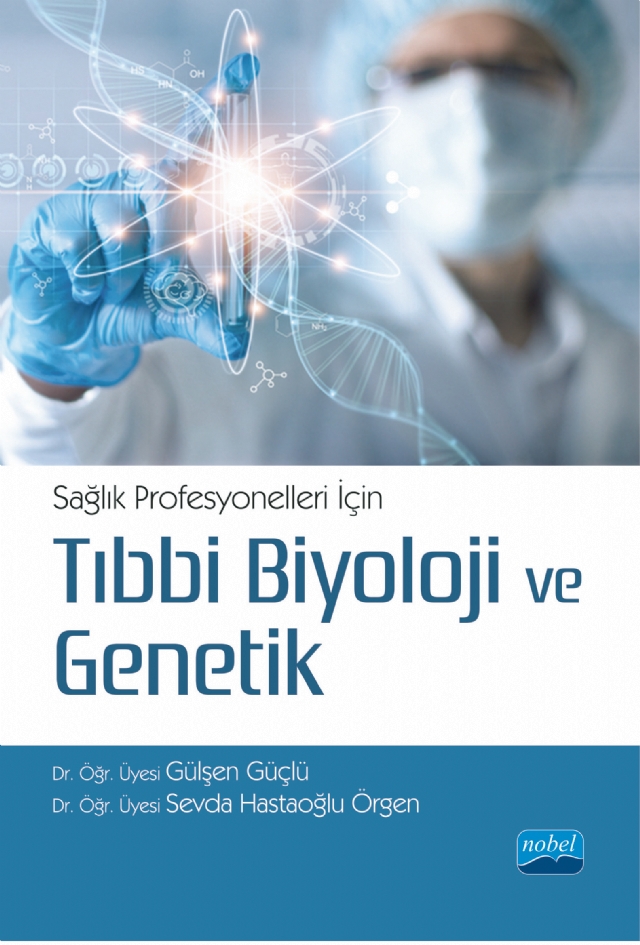
The development of medical biology and genetics with each passing day contributes to the development of new diagnostic and treatment methods in medicine. This book is a versatile book in which basic and up-to-date information is compiled in the field of medical biology and genetics and the acquisition of knowledge in this field is comprehensively covered. It also provides a framework for students to understand the field of medical biology and genetics, while providing the basis for establishing a continuing education program in this field.
Medical Biology and Genetics for Health Professionals book; I hope it will be a resource for everyone interested in medicine and biology education and will motivate them to take a stronger step towards science and new ideas...
Medical Biology and Genetics for Health Professionals book; I hope it will be a resource for everyone interested in medicine and biology education and will motivate them to take a stronger step towards science and new ideas...

This book has been prepared for faculty or college students who take the biochemistry course in a short period of time, such as one semester. Although there are many translated and written biochemistry books in our country, what makes this book unique among them is that it has a content and appropriate volume that students can easily understand.
In the writing of the book, one of the most valid methods in learning and teaching, the "general to detailed method" was applied. At the beginning of each topic, a brief summary of that topic is given and then the details of the topic are given.
In order to better understand the information, the written information is associated with examples and analogies and supported by many formulas, pictures and tables.
In the writing of the book, one of the most valid methods in learning and teaching, the "general to detailed method" was applied. At the beginning of each topic, a brief summary of that topic is given and then the details of the topic are given.
In order to better understand the information, the written information is associated with examples and analogies and supported by many formulas, pictures and tables.

Click to download PDF file
Medical biology and genetics is the science of biology that studies the hereditary character that affects human existence and health. This book has been arranged according to the needs of the departments to be used during the conduct of the "Medical Biology and Genetics" course taught in the first years of Health Services programs and faculties. The selected course contents are handled in a general framework and aim to provide students with a basic perspective on the field. The chapters of the book are planned as seven chapters in accordance with this purpose. In the first three chapters, cell biology and metabolism are explained from simple to complex in the light of current literature. In the following three chapters, the structure and organization of hereditary material are explained and detailed information is given about genetic diseases affecting human health. In the last section, cancer genetics and pathogenesis are explained and the pathophysiological process from gene to cell behavior is discussed as a whole.
Students who are new to higher education have difficulty in understanding the main subjects of medical biology and genetics, which consist of abstract data. For this reason, the topics in the book are explained in an understandable language as well as being embodied with detailed drawings. Although the topics are explained briefly and concisely, they are supported by the current literature.
Medical biology and genetics is the science of biology that studies the hereditary character that affects human existence and health. This book has been arranged according to the needs of the departments to be used during the conduct of the "Medical Biology and Genetics" course taught in the first years of Health Services programs and faculties. The selected course contents are handled in a general framework and aim to provide students with a basic perspective on the field. The chapters of the book are planned as seven chapters in accordance with this purpose. In the first three chapters, cell biology and metabolism are explained from simple to complex in the light of current literature. In the following three chapters, the structure and organization of hereditary material are explained and detailed information is given about genetic diseases affecting human health. In the last section, cancer genetics and pathogenesis are explained and the pathophysiological process from gene to cell behavior is discussed as a whole.
Students who are new to higher education have difficulty in understanding the main subjects of medical biology and genetics, which consist of abstract data. For this reason, the topics in the book are explained in an understandable language as well as being embodied with detailed drawings. Although the topics are explained briefly and concisely, they are supported by the current literature.

In recent years, our knowledge has increased within the scope of research on the molecular basis of diseases. With the use of increasing knowledge in both medical biology and medical genetics, diseases caused by cellular and chromosomal changes, which have a genetic basis, are tried to be understood on the one hand and treated on the other. Written from this point of view, this book covers all topics from the beginning of life to cell death mechanisms under the main title of "Medical Biology". Under the main title of “Genetics”, it provides an integrity starting from the structure of DNA and RNA, including the features of the genetic code, mutations and inheritance patterns. The difference of our book from its counterparts written so far is that the second part includes molecular genetics applications and practical applications step by step. There are six chapters in the "Application" part of the book, in which medical biology and genetics are covered in fourteen chapters. This book, which has been prepared in accordance with the curriculum of the relevant boards of medical faculties, is a textbook that can be used in the relevant departments of health sciences faculties, dentistry faculties and health schools. This book, which has been prepared as a result of intense effort by following up-to-date data in a period of about two years, is a resource that undergraduate, graduate students and all academics can benefit from.

The fact that the epidemic that occurred anywhere in the globalizing world was on the agenda of other countries in a short time has made medical microbiology more important as well as many disciplines. In this sense, microbiology education with its theoretical and practical applications has become even more important and necessary in training professional technical personnel for the field. The book is planned as a laboratory guide that provides up-to-date practical information without going into any detail to Health Services Vocational Schools Medical Laboratory Technician students and educators, medical school students, medical microbiology graduate-doctorate and medical specialty students, and moreover, to everyone related to medical microbiology.
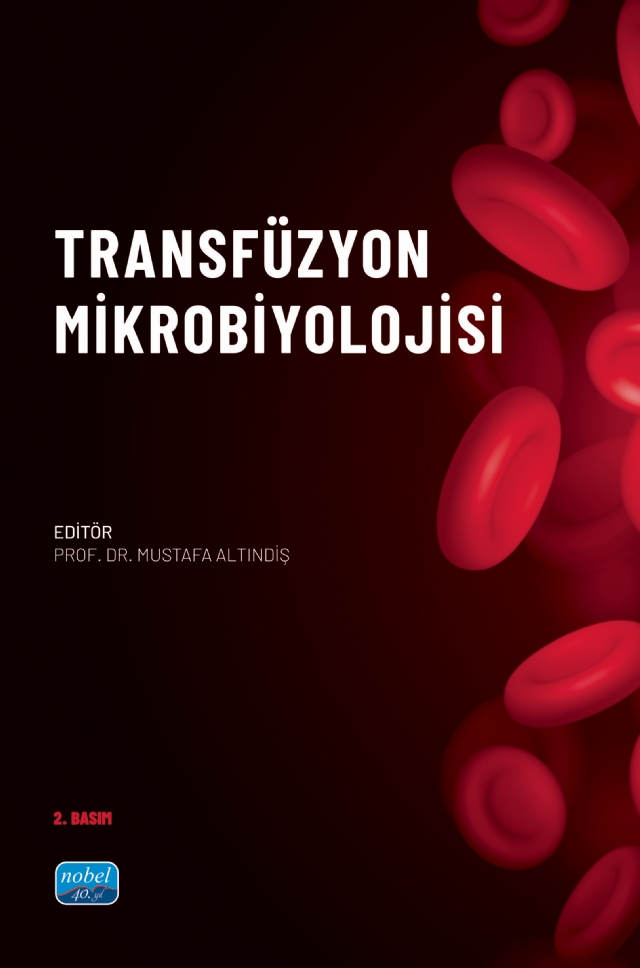
The field of transfusion microbiology is of particular importance since the use of blood, which is still the only source of human blood, as a life-saving medical product when necessary, concerns all parties and processes in terms of patient safety.
Microbiology has always been intertwined with transfusion medicine from the very beginning. With our current knowledge, viral hepatitis and later HIV have been observed as inevitable and persistent complications of transfusions long after the onset and development of transfusion. For more than four decades, blood centers have struggled with the control of these and other transfusion-transmitted microorganisms. In the years before the routine screening of hepatitis (especially hepatitis C), blood transfusions were accepted as the main mode of transmission of these agents. Subsequent HIV transmission could also be a major transfusion tragedy.
All these have taught us that the process must be managed with serious actions in ensuring blood transfusion safety. Today, even more unpredictable factors have emerged, and it seems that they will continue to emerge and besiege humanity.
Microbiology has always been intertwined with transfusion medicine from the very beginning. With our current knowledge, viral hepatitis and later HIV have been observed as inevitable and persistent complications of transfusions long after the onset and development of transfusion. For more than four decades, blood centers have struggled with the control of these and other transfusion-transmitted microorganisms. In the years before the routine screening of hepatitis (especially hepatitis C), blood transfusions were accepted as the main mode of transmission of these agents. Subsequent HIV transmission could also be a major transfusion tragedy.
All these have taught us that the process must be managed with serious actions in ensuring blood transfusion safety. Today, even more unpredictable factors have emerged, and it seems that they will continue to emerge and besiege humanity.
